Portrait of a park: Zürich’s groundbreaking vertical garden, MFO-Park
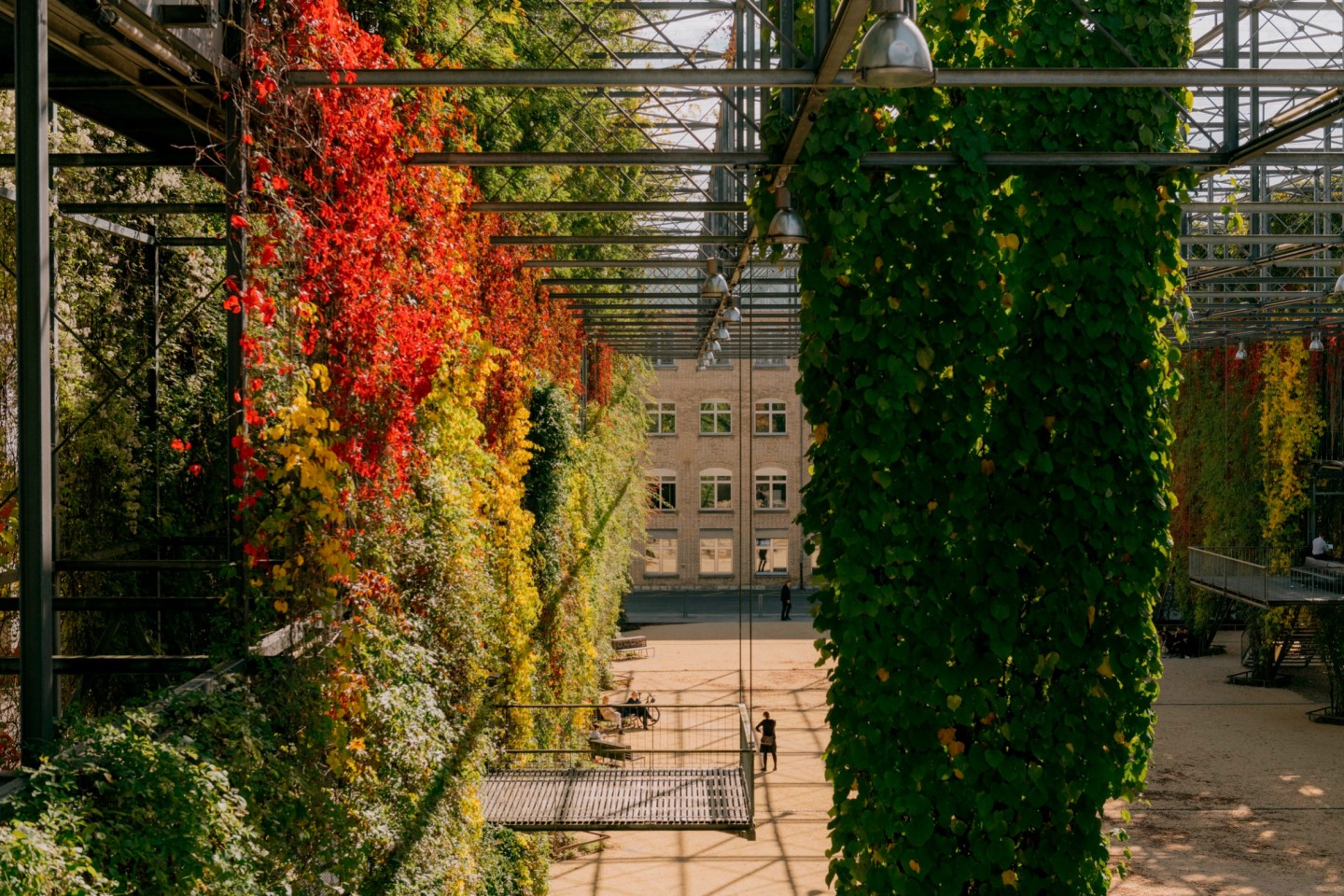
Roula Khalaf, Editor of the FT, selects her favourite stories in this weekly newsletter.
This article is part of a guide to Zürich from FT Globetrotter
It’s a sharp, bright morning in Zürich and I am meeting a contact for work. Arriving from London’s late-winter gloom, I am disorientated by the hyper-real light.
My contact, an expat and fellow Brit, suggests I acclimatise with a visit to a “vertical park made by architects from the bones of an old engineering factory”. She tells me how she stumbled across it once, and it struck her as a microcosm of Switzerland’s progressive approach to urban regeneration. We can look out across rooftops — one of the best ways to orient oneself as a new arrival in any city — if we climb the park’s high, hollow staircases.
MFO-Park is in the business-y, northern suburb of Oerlikon. We find it on James-Joyce-Strasse after searching a series of hushed plazas. The street is named after one of Zürich’s favourite immigrants: Joyce spent the first world war in exile in the city, wrote much of Ulysses, his 1922 masterpiece, here, and died in Zürich in 1941 (though not in this part of town).
At first sight, the park looks more like a neglected building site than a public amenity: a kind of open-air atrium the size of an entire block, with double walls and roof constructed in open-grid form, a mesh of steel something like raw scaffolding.
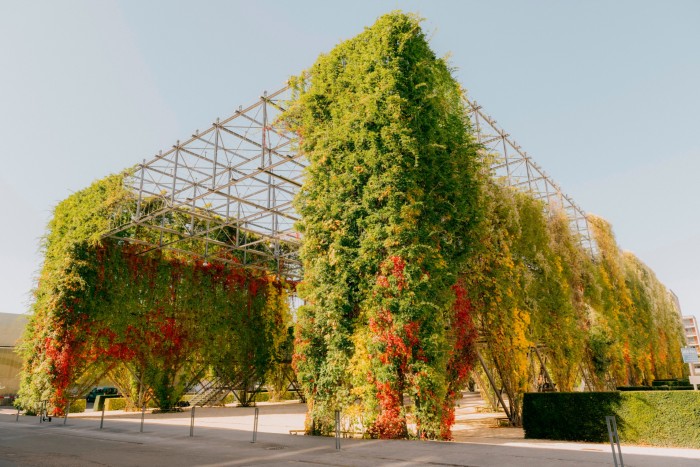
The mesh is laced with trellised plants — today, mostly bare, deathly-looking creeper branches — pleached and trained to climb the structure’s walls. But it is February. On closer inspection they turn out not to be dead at all, but sprayed with the near-luminous green of early buds.
I am dizzied by the scale and geometry (the structure is 17 metres high, 35 metres wide and 100 metres long) and the lattice of shifting shadows its steel skeleton casts on the ground.
“As architects, we seldom get to build parks,” says Oliver S Gilbert of Burckhardt + Partner, which with landscape architects Raderschallpartner conceived and led the MFO-Park project as a “living” structure. I called Gilbert when I was back home in London to find out more. “Mostly, buildings are finished things. But this one, over the years it just grows and grows,” he says.
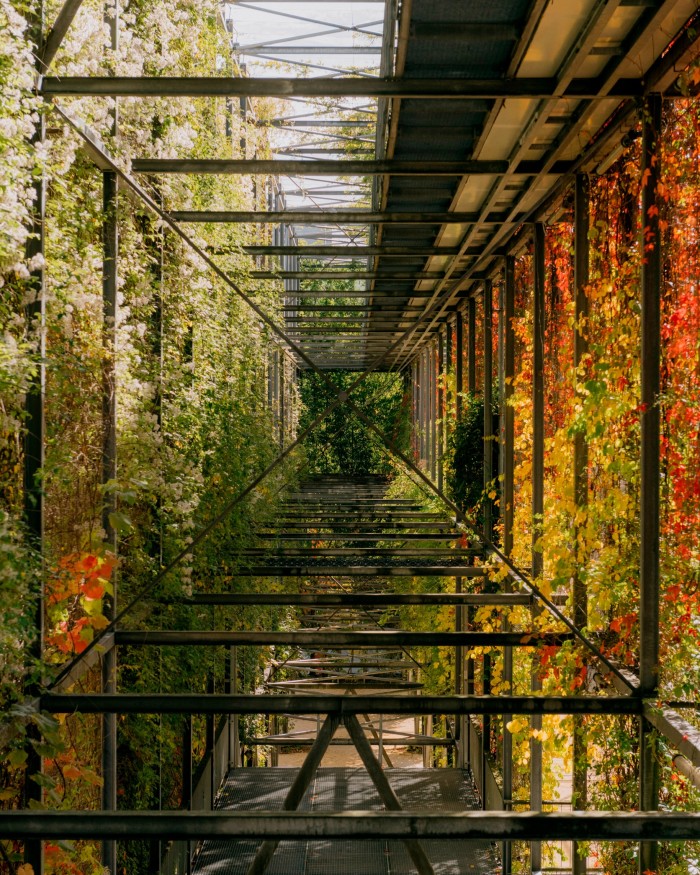
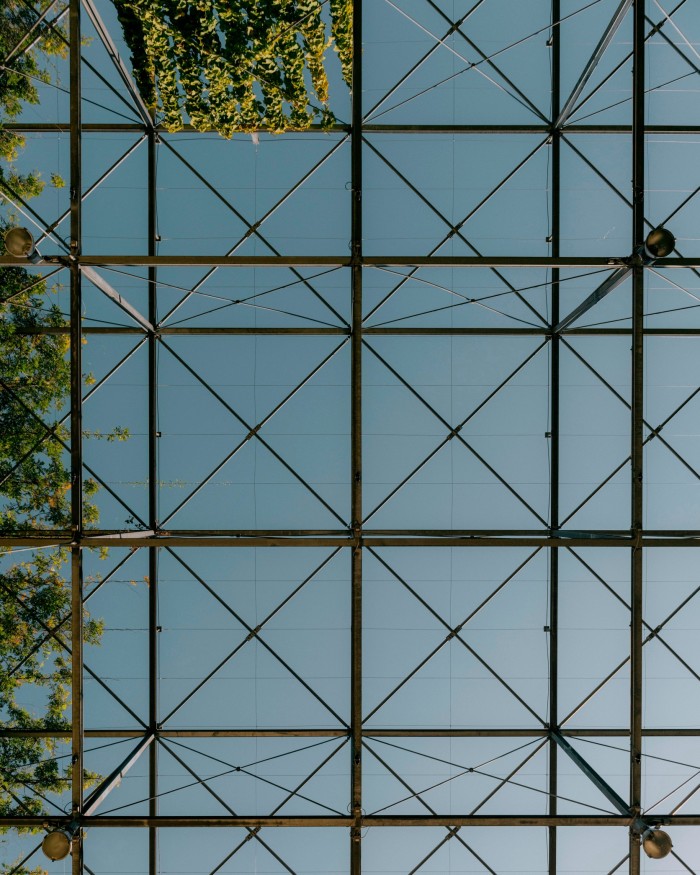
Late-20th-century deindustrialisation gave Gilbert, who was then in his 20s and newly qualified, that chance. He and his team started work in 1998, when Zürich’s administration held planning competitions to overhaul industrial Oerlikon and turn the area’s former factories and workshops into a new business and a residential district.
Commuters and locals would require dynamic, stimulating public spaces for health, rest and leisure. And so part of the former Maschinenfabrik Oerlikon (Machine Factory Oerlikon) site, which in the 19th and 20th centuries built electric locomotives, was among five “free space” parks designated for use by those living and working in the new district.
What Gilbert and his team conceived was “a ‘park-house’ — a park on the ground, with different levels like a house,” he says. “We wanted to remember and honour the size of [the site] when it held engines and boats. Even if younger people using it today don’t remember that time, we have used its industrial language for their park.”
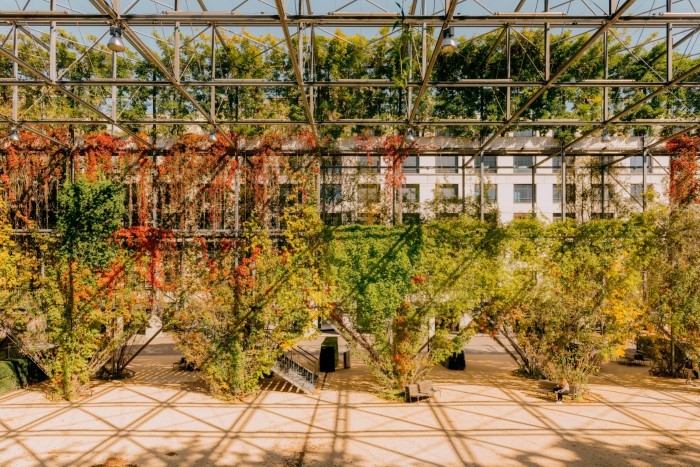
At one time, long before it opened in 2002, the entire site was filled with construction debris, sand and ash. Gilbert remembers a long process of decontaminating heavily polluted ground before work could start.
More than 20 years later, on summer days the steel walls vanish behind wisteria, clematis and roses (there are about 100 plant species in all). The effect, says Gilbert, is intended as one of shelter and shade, the screening out of the city with fleeting scents and shifting plays of shadows and light.
“If it were in the centre of town, this park would be overused,” he says. “In Oerlikon, you can still find a quiet minute. It’s still exactly how we hoped it would be.”
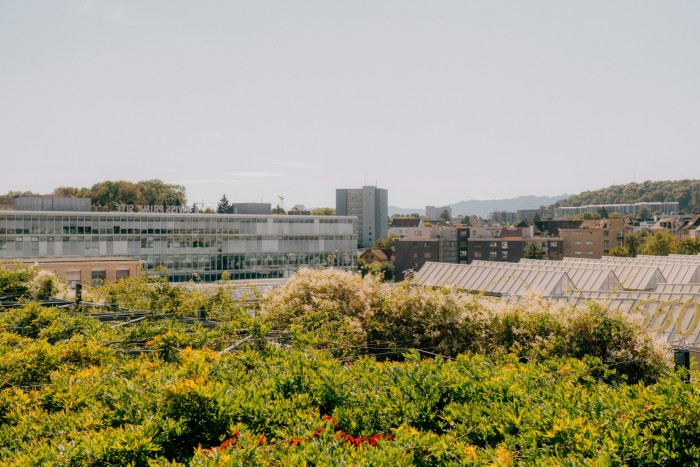
Perhaps MFO-Park’s greatest gift to Zürich’s office workers is its lack of prescriptive purpose. That is intentional. It is, say the architects, “open to any use”.
In summer, the sprung ground level, which contains less of the usual clutter like benches and tables, is wide enough for sports and games. Occasional open-air cinema screenings, theatre, concerts and even variety shows are staged, which the architects say recall Zürich’s park theatres of the Baroque era. The park’s upper levels work in the same way as private boxes at the opera, offering an elevated view of the performance below.
Year round, it must be perfect for idling away an hour (perhaps with a book that requires quiet and uninterrupted concentration, such as Ulysses).
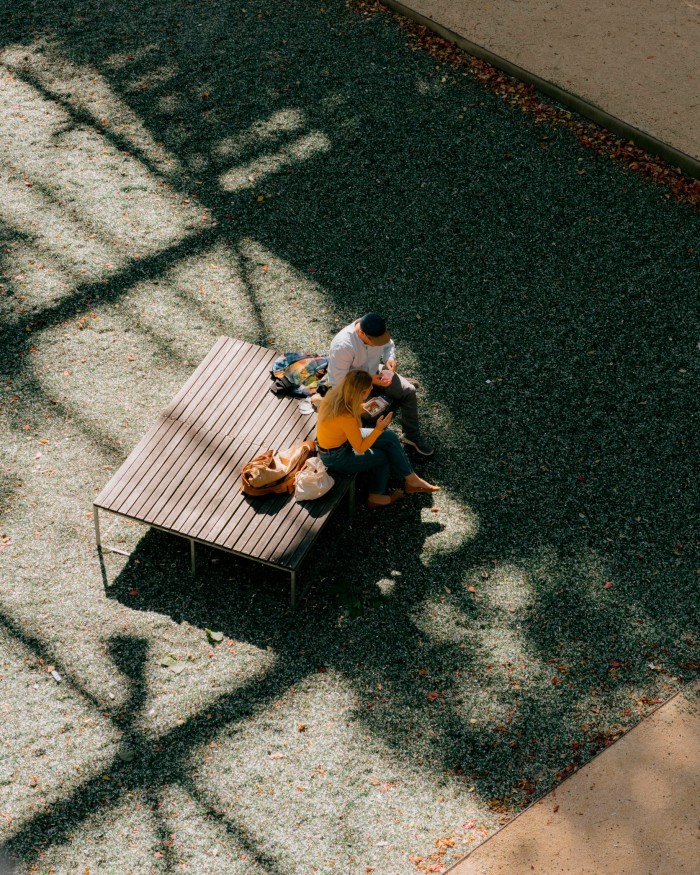
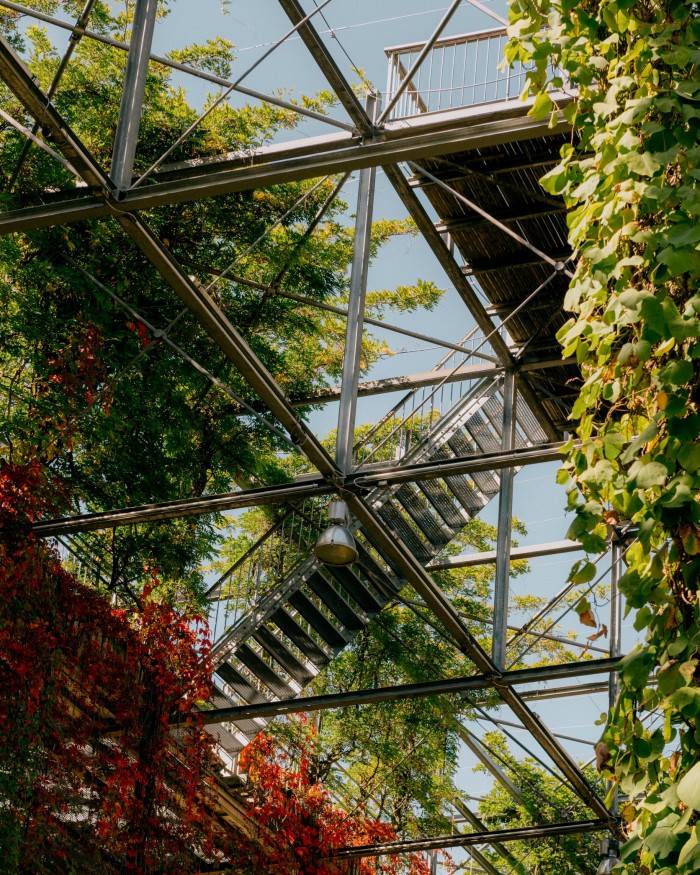
On the day of my visit, MFO-Park’s benches, staircases and the ornamental pool at ground level are deserted, though that is no reflection of its popularity: it is 11am on a weekday and 2C.
As my contact and I clank up the staircase — delirious at being supported only by open mesh 10 metres above the ground — we find a small group of teenagers larking about on one of the sun decks. They suddenly fall silent, staring at us from beneath hoods and bobble hats, their dying chatter leaving curls of icy breath in the air. Today, the city’s industrial past has been claimed by Zürich’s youth. Website; Directions
Tell us about your favourite green space in Zürich in the comments below. And follow FT Globetrotter on Instagram at @FTGlobetrotter
Cities with the FT
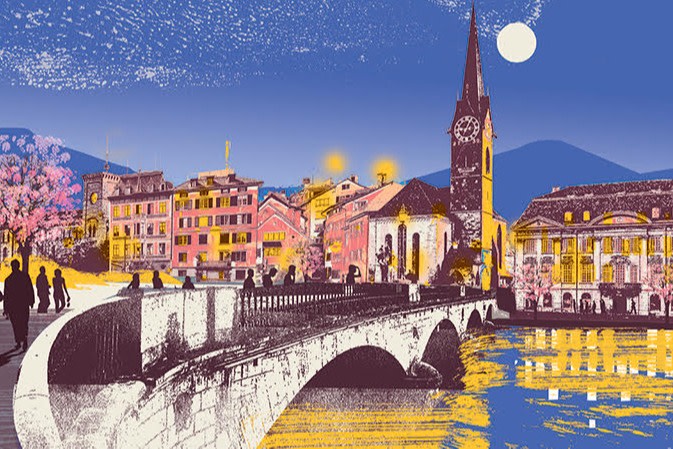
FT Globetrotter, our insider guides to some of the world’s greatest cities, offers expert advice on eating and drinking, exercise, art and culture — and much more
Find us in Zürich, Melbourne, Hong Kong, Tokyo, New York, London, Paris, Rome, Frankfurt, Singapore, Miami, Toronto, Madrid and Copenhagen
Comments